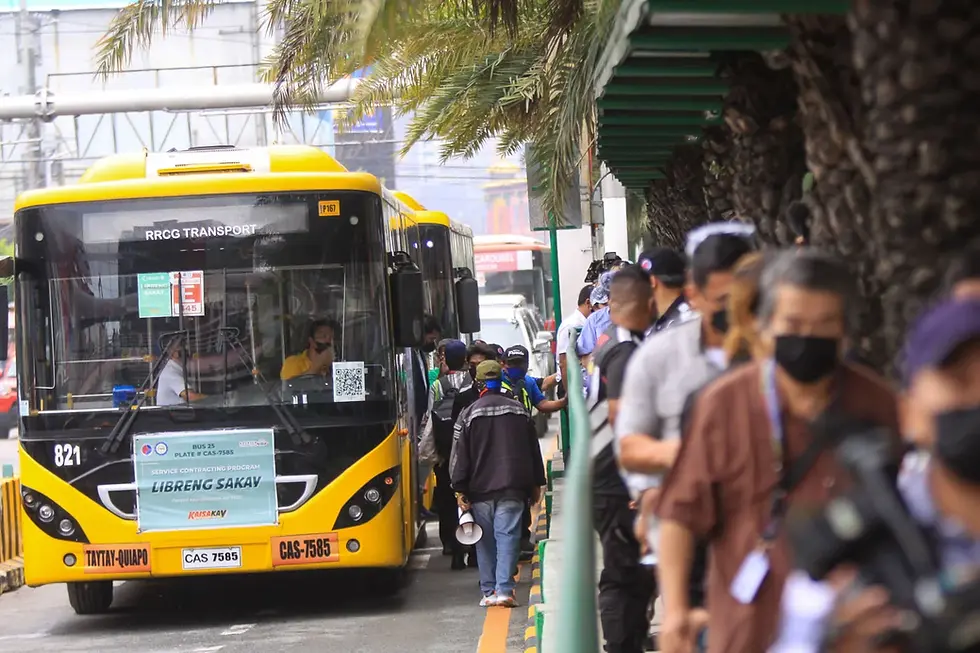Transport Data Starts at Home: The Case of Household Surveys for Transportation
- Pamela Cunanan
- Sep 17
- 3 min read
Updated: Sep 24
Every day, millions of Filipinos choose between walking, riding a jeepney, or booking on a ride-hailing app — but do we know how these choices add up? Understanding these decisions is crucial for transport planning. One of the most basic, but powerful tools to uncover them is through a household survey.
Household surveys are typically conducted by government agencies to gather essential information about their population, including demographic characteristics, population size, and socioeconomic standing. The data are then used to guide decision-making, craft policies, and design programs that address the needs of the most vulnerable sectors.
In the Philippines, household surveys, especially the recurring ones, are primarily conducted by the Philippine Statistics Authority (PSA). Among some of these are Family Income and Expenditure Survey (FIES), Labor Force Survey (LFS), National Demographic and Health Survey (NDHS), and Annual Poverty Indicators Survey (APIS). While there are plenty of surveys on socioeconomic indicators and population composition, household-level data on transport remains absent.

In a paper by Lidasan and Rivera (n.d.) from the School of Urban & Regional Planning of University of the Philippines, they argued for formally incorporating transport data requirements into national housing and census surveys, so that household-level travel behavior and commodity flow information become a systematic part of policymaking. Their work highlights how person-trip and related data at the household level are indispensable for travel demand estimation, inclusive mobility strategies, and logistics planning.
The conduct of household-based surveys for transport data is not new. In Singapore, for example, they have several household-based surveys related to transportation, such as their Household Travel Survey which aims to collect data on “how, when and where Singaporeans travel”. In larger countries, surveys are sometimes done by territory, state or city, rather than national. In Australia, one example is the Victorian Integrated Survey of Travel and Activity, which has a unique feature: household members over 16 are asked to carry a small GPS device on their travel days for data validation. Unlike these countries, the Philippines has not had a large-scale transport-focused household survey in years.
Currently, transport-related data in the Philippines is managed by the Department of Transportation (DOTr) and the Department of Public Works and Highways (DPWH). However, such data is still severely lacking at the household level. We may have figures on the number of vehicles on the road, the total registered PUJs and PUVs, or the volume of passengers on metro rail systems — but where is the people-centered data on transportation?
Earlier this year, the PSA approved the rollout of the Household Interview Survey for Household Interview Survey for Active Transport Mode Choice, led by DOTr. It is the first PSA-approved household survey in the country dedicated to collecting large-scale transport-related information, behaviors, and preferences of Filipinos. The said survey is a part of DOTr’s broader Active Transport Strategic Master Plan (ATSMP).

The launch of this Household Interview Survey for Active Transport Mode Choice by DOTr is a commendable step forward. For the first time, we are seeing a nationwide effort to systematically capture how Filipinos actually move. This kind of people-centered data is essential for designing transport systems that respond to real needs, and it sets a strong foundation for evidence-based policies in the years ahead.
With the advent of transport apps, such as Grab, InDrive, Angkas, JoyRide PH, and with the steady increase in the volume of vehicles on the road, transportation is becoming multidimensional with more stakeholders involved. Thus, it is crucial now more than ever to take a step back and remember that transport systems exist to serve people, not just vehicles.
Household-based surveys allow us to capture the realities of everyday travel: from the choices families make, to the barriers they face, to the modes they prefer. By investing in people-centered data, we can design transport policies that are more inclusive, sustainable, and efficient for all Filipinos.
(In the next couple of articles, we’ll be sharing practical guides for planners, researchers, and government agencies on how to design, plan, and execute Household Interview Surveys (HIS) for transport. From framing the right questions, to ensuring data quality, to applying insights for real-world planning — these will serve as a roadmap for anyone looking to put people at the center of mobility policy.)









